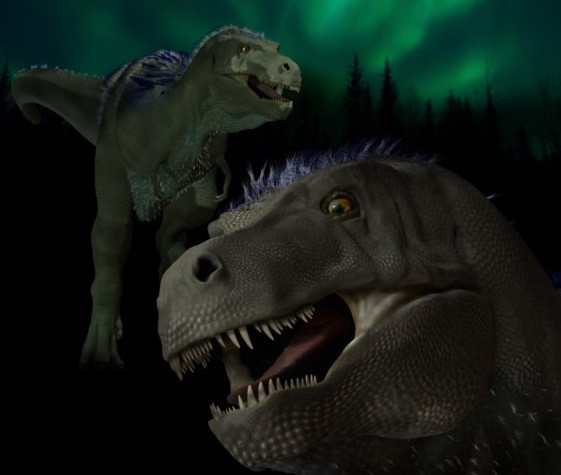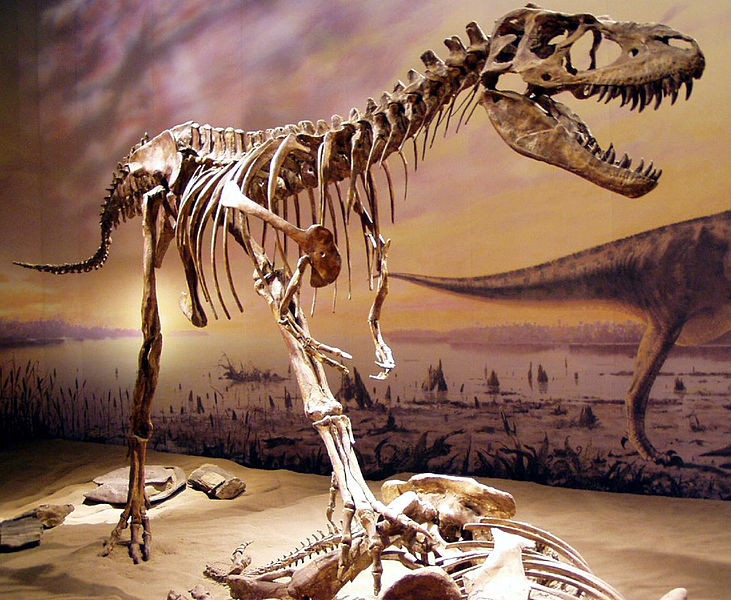T.Rex Cousin Bones Prove Existence of 'Pygmy Tyrannosaur'

The discovery of 70-million-year-old Alaskan dinosaur bones may have unearthed the existence of a smaller cousin of Tyrannosaurus rex.
A partial skull roof, maxilla and jaw were recovered from the Prince Creek in northern Alaska. Scientists believe the fossils belong to a different tyrannosaurine species.
The bones, found in Late Cretaceous sediment, reveal a new small dinosaur known as Nanuqsaurus hoglundi.
N. hoglundi was likely to have inhabited a seasonally extreme, high-latitude continental environment on the northernmost edge of Cretaceous North America. However, the majority of knowledge surrounding the lineage of the carnivorous theropod, meaning "beast feet" in Greek, comes from fossils found in low or mid-latitudes of North America and Asia.
The research was published by Anthony Fiorillo and Ronald Tykoski of the Perot Museum of Nature and Science in Texas.
According to Fiorillo, the discovery of a pygmy tyrannosaur tells us "more about what the environment was like in the ancient Arctic".

He added: "But what makes this discovery even more exciting is that Nanuqsaurus hoglundi also tells us about the biological richness of the ancient polar world during a time when the Earth was very warm compared to today."
The newly discovered fossils were compared with fossils to previously known species of tyrannosauridae.
According to the results of the analysis, the cranial bones of N. hoglundi are closely related to two other dinosaurs, Tarbosaurus and Tyrannosaurus.
The new find has been estimated as cominf from a relatively small dinosaur, with an adult skull length estimated at 25 inches, compared to 60 inches for T.rex. Its smaller body size, compared to other tyrannosauridae from lower altitudes, has led scientists to suggest N. hoglundi may have adapted to variability in resources during the arctic seasons.
Further diversification may stem from the dinosaurs' partial isolation in the north by land barriers, such as the east-west running Brooks Range. Although the preserved elements of N. Hoglundi are fragments, the authors point to morphological data to provide support for its place among derived tyrannosaurines.
This discovery may provide new insights into the adaptability and evolution of tyrannosaurs in an arctic environment.
The paper was published in the open-access journal Plos One.
© Copyright IBTimes 2025. All rights reserved.






















